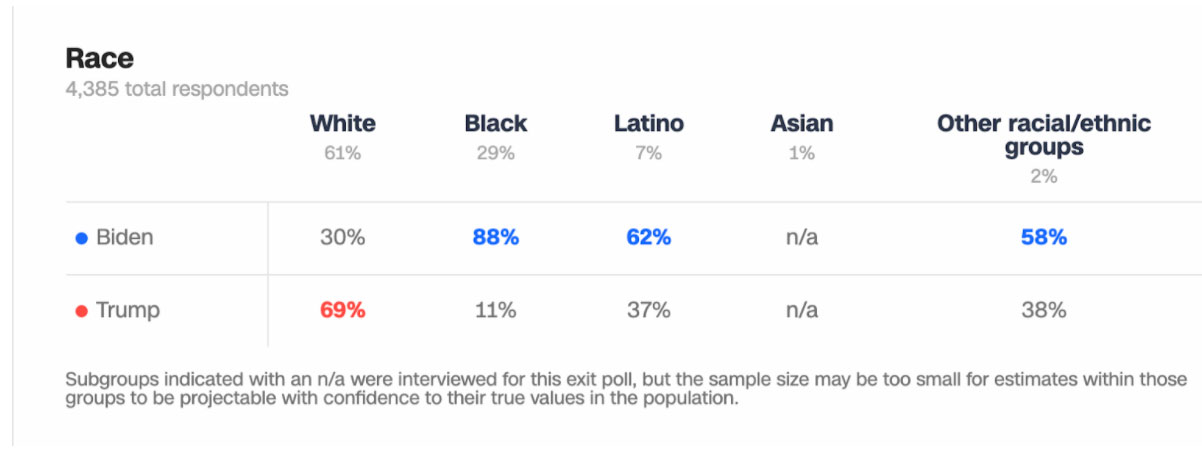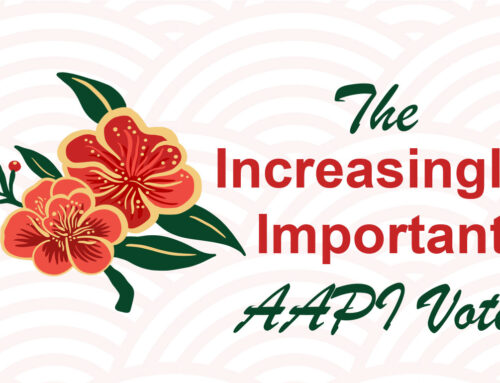By: Tom Bonier, TargetSmart CEO
A swing of just 21,459 votes from Biden to Trump would have reversed the outcome of the 2020 presidential election. That equates to one one-hundredth of one percent of the record setting total turnout of more than 158 million votes cast. The relative closeness of this election has been well-reported. What has perhaps been missed in the many election post-mortems is the decisive role that Asian Americans played in delivering the Biden-Harris ticket to victory.
The AAPI (Asian American Pacific Islander) vote surge in 2020 was generally not anticipated by those outside of the community and the reasons for it have not been broadly reported. What’s more, few have engaged in a discussion of how to ensure the AAPI turnout surge becomes a sustained level of high voter engagement rather than a single moment in time. In this essay we seek to move this critically important conversation forward.
First, let’s understand exactly what happened. At this point we’ve compiled the individual vote history for 98.5% of the 2020 general election voters. This extensive dataset affords us the opportunity to better understand the composition of the electorate. Of the 154.5 million voters for whom we’ve compiled individual vote history, just over 4 million are Asian American. That equates to 2.6% of all ballots cast. Relative to the last presidential election, in 2016, the total number of ballots cast by AAPI voters increased by over 47%. For context, the total turnout for all other voters increased by only 12%.
This massive surge in turnout was a key factor in determining the outcome of some of the closest presidential contests at the state level. In fact, the percent increase in AAPI votes cast in Georgia was the second highest state-level increase in the nation. AAPI turnout in Georgia increased by almost 62,000 votes over 2016. Considering that the Biden-Harris ticket carried the state by fewer than 12,000 votes, the AAPI surge was clearly decisive. What’s more, Arizona and Nevada were both in the top 10 for AAPI surge vote, and both saw their presidential contests won by margins of just tens of thousands of votes. Across all of the presidential battleground states, AAPI turnout increased by 357,969 votes, a breathtaking 48% increase in turnout.
A key component of Joe Biden’s win in the 2020 election was the fact that the electorate evolved significantly, relative to the 2016 electorate that sent Donald Trump to the White House. In fact, 31.9% of all 2020 voters did not cast a ballot in the 2016 presidential election. What’s especially impressive is the fact that almost half (49.4%) of all AAPI voters in 2020 did not vote in 2016. Perhaps even more striking is the concentration of first time voters among the AAPI electorate: 23% of AAPI voters in 2020 had never cast a ballot in any American election before, a number almost double that of the 12.2% of all other 2020 voters.
So why didn’t we see this coming, and why has the surge in AAPI turnout in 2020 still not been widely disseminated and discussed even after the election? While the true answer is likely complicated, one key contributing factor is the way that exit polls and traditional campaign polls served to “other” Asian Americans.
The Fox News Voter Analysis, for example, didn’t even mention AAPI voters. They were grouped under a catch-all “other” category.

The exit polls used by a consortium of other media outlets did somewhat better at the national level, producing a breakout for AAPI voters nationally, but failing in key states. Take Georgia, for example, the state that produced the narrowest percent margin of victory for President Biden. AAPI voters almost doubled their total turnout there in 2020, relative to 2016, and were undoubtedly a key component of Biden’s victory. Yet the exit polls badly underestimated their turnout, and consigned any insight into their voting performance to “n/a” status.

This error is especially impactful, in that exit poll data becomes available on election night, as polls close, and thus serves as the most powerful source of information from which to shape narratives about how the electoral outcomes came to be. Generally the true data on voter turnout from voter files takes days, weeks, or even months after an election to be released by state and local election officials, and by that time false election narratives based on faulty data have already congealed in the public consciousness. These errors can have a lasting negative impact in terms of future investment in organizing in the communities by political parties and candidates, and can leave a void of understanding of those communities and what issues are most important to determining their vote.
Another blind spot in our understanding of the AAPI vote arises from the individual-level voter file data itself. While the AAPI community shares many interests and political objectives, it is far from monolithic. The AAPI community is incredibly diverse, with roots in dozens of countries, and even more different languages. Understanding, and generally being aware of these differences, can be key to organizing effectively in these communities. Yet at this point, our voter files generally only identify AAPI voters as broadly “Asian”, without any corresponding data on nation of origin, language preference, nor generational status. These latter data elements are not readily available from larger consumer data vendors, and likely must be built internally, requiring significant effort and investment going forward.
So what can we do to change all of this? Most of it comes down to investment, and emphasis. As a matter of practice, campaigns and organizations doing survey research should ensure that they are not othering AAPIs in their research. This means investing in oversamples, where relevant and necessary, so as to have enough respondents to provide a full understanding of these voters. As noted above, an investment in improving voter file data on AAPI voters is also critically important (it should be noted, the same investments are also needed, in a similar sense, to better understand Latino Americans). And perhaps most importantly, we must invest in organizations built around activating and persuading AAPI voters. While we don’t have confidence in the early post-election analyses suggesting a significant swing towards Trump among AAPI voters, we believe that there is still the potential for Democrats to improve their performance.





